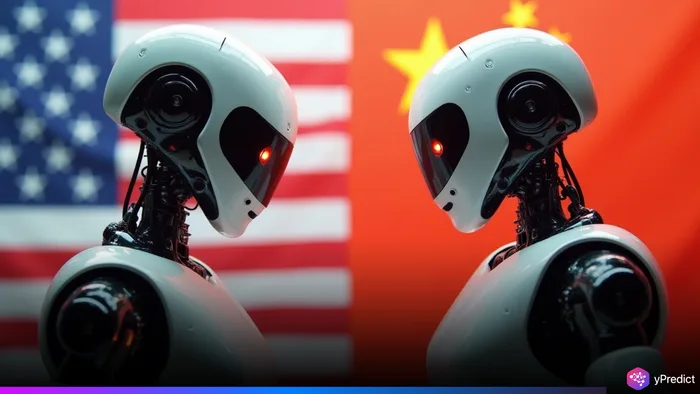
As the U.S. doubles down on its AI strategy through export restrictions and foundational model development, a new Foreign Affairs op-ed warns that Washington must prepare for a world where it finishes second to China in the AI race.
In “What If China Wins the AI Race?”, Adam Segal of the Council on Foreign Relations and Sebastian Elbaum from the University of Virginia argue that although American tech companies still lead in cutting-edge model development, China’s AI ecosystem is catching up fast. Breakthroughs by Chinese firms such as DeepSeek, Baidu, Tencent, and Alibaba Cloud suggest the gap is narrowing, especially in generative AI, multimodal models, and applied use cases.
America’s Two-Pronged Strategy
The United States is pursuing what could be called a dual strategy for AI. The first piece is aimed at hampering China’s development of AI by putting export controls on advanced chips and advanced semiconductors, core devices needed to train powerful AI models.
The second piece of the strategy speeds up AI development in the home market with flexibilities in regulations, investments in chip manufacturing, investing in energy infrastructure, and fast-tracking government agencies that want to use AI in their healthcare and analyze fraud legal cases.
This strategy is beneficial to U.S. tech companies (OpenAI, Google, Anthropic, Meta), allowing them to remain competitive in developing the major AI models that will have an impact in their respective fields.
Such models develop speech understanding, image generating, complex understanding of science problems, and improvisations with hallucinations with visuals or factual errors that are common to summaries and in AI content.
China Gains Ground
However, China’s AI firms are increasingly producing competitive models with growing adoption, especially in emerging markets. The op-ed suggests that Beijing’s top-down investment in infrastructure, domestic talent, and model deployment may eventually match or even surpass U.S. capabilities in specific AI domains.
The authors argue that, unlike the U.S.’s slow reaction in the 5G race, where it failed to produce viable Huawei alternatives in time, Washington can still secure strategic advantages, even without outright dominance.
Preparing for Second Place
Instead of focusing solely on preserving AI dominance, the U.S. should adopt a resilience-driven AI strategy that promotes openness, collaboration, and global accessibility. This includes fostering open ecosystems that ease migration between models to reduce lock-in, supporting comparative tools to enhance transparency and trust, and enabling secure, regulated sharing of public data with trusted developers.
Strengthening alliances with like-minded nations to co-develop AI infrastructure and standards, while prioritizing usability, affordability, and language diversity, can also help make U.S.-backed AI models more appealing to emerging markets.
Not a Repeat of the 5G Failure
While the U.S. was blindsided during the global 5G rollout, the authors argue that AI’s open-ended potential gives Washington time to adjust. Winning in AI doesn’t necessarily mean dominating every metric; it can mean shaping the rules of the game, ensuring safety, and maintaining global influence even if Chinese models become more widely adopted.
The Bottom Line
The race for AI supremacy is no longer about tech alone; it’s about ecosystems, governance, and strategic foresight. Segal and Elbaum call for a broader American vision: one that embraces plurality, resilience, and international alignment, even if China eventually takes the lead in AI development.






